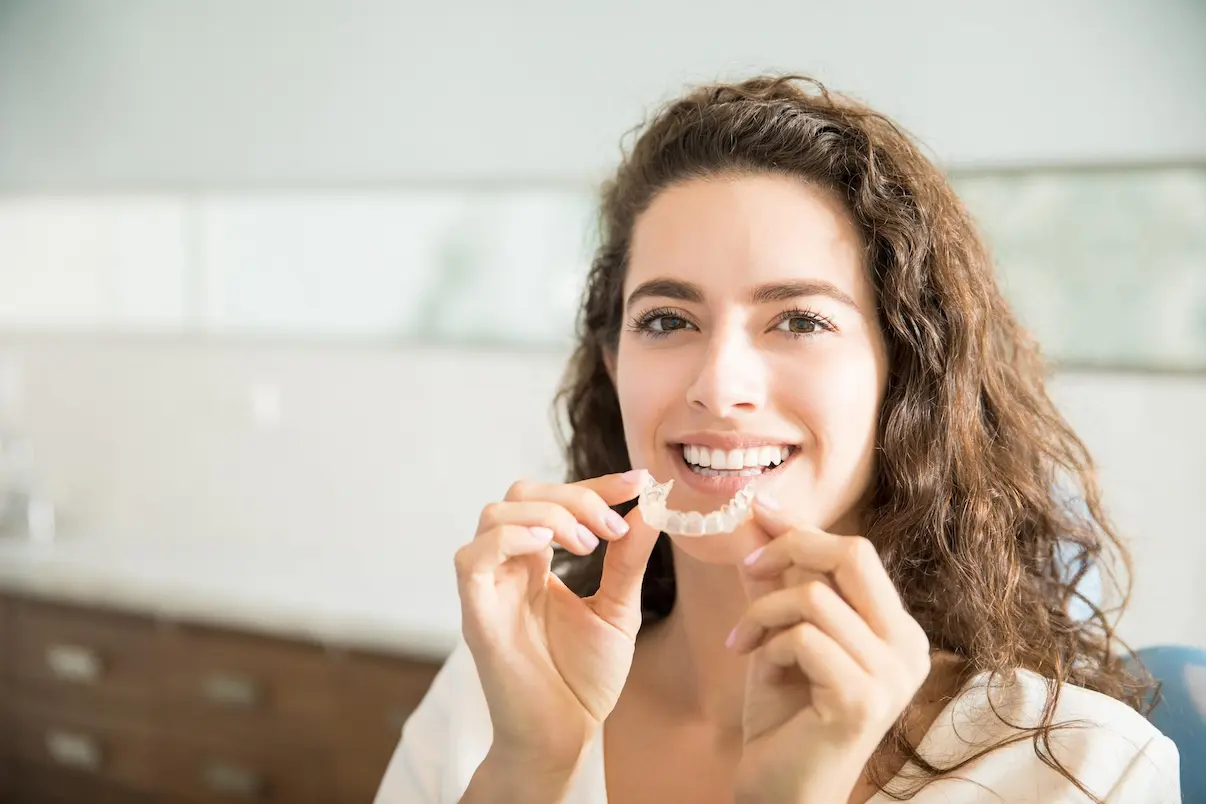Submit Request ...
-
Forums
Can underbite be fixed with Invisalign?

Invisalign is a popular treatment for orthodontic issues like crooked teeth and gaps between teeth. Many patients choose Invisalign because its clear plastic trays are less noticeable than other options like metal braces, and they can be removed for short periods of time. But can Invisalign fix an underbite? Orthodontic treatment options for an underbite vary depending on the severity of the condition. For a mild underbite, Invisalign can be effective. Your orthodontist may recommend other options for more severe conditions.
What is an Underbite?
An ideal, healthy bite is when the upper front teeth sit slightly in front of the lower front teeth. An underbite is a dental condition in which the lower jaw protrudes forward, causing the lower teeth to overlap the upper teeth. In other words, instead of being behind the upper teeth, the lower teeth are in front of them when the patient bites down. Underbites can range from mild to severe. Most underbites are genetic and tend to run in families. These irregularities in jaw size and shape cannot be prevented and usually need orthodontic or surgical treatment.
If left untreated, an underbite can cause a range of problems, from difficulty chewing and speaking, to jaw pain and even sleep apnea. The position of the lower jaw in patients with this condition can also cause excessive wear and tear on the top teeth, causing them to break, crack, and be more susceptible to cavities. Underbites are also a cosmetic issue, and patients may feel self-conscious about the look of their smile.
The good news is that an underbite is a treatable condition that can usually be corrected with orthodontics. And, for some patients, Invisalign is the way to go.
Invisalign for Underbites
Invisalign treatment consists of a series of clear plastic aligners that are custom-fitted to the patient’s teeth. Every two weeks or so, the patient changes to the next set of aligners as teeth are gradually moved into the desired position. Each set of aligners is slightly different from the previous set to move teeth slowly and comfortably over time. Patients often choose Invisalign because it is less noticeable than other orthodontic treatments like braces, and because the aligners can be removed for short periods of time, such as for eating or for special occasions.
Invisalign is great for treating a variety of dental problems, including mild cases of crowded or crooked teeth, gaps between teeth, and even some cases of overbite, which is when the top teeth protrude too far beyond the bottom front teeth.
Whether an underbite can be fixed with Invisalign depends on the severity of the patient’s condition. Invisalign is generally effective in treating mild to moderate underbites. The aligners can gradually shift the teeth into position to allow the bottom jaw to close with proper alignment.
Before recommending treatment, the dentist or orthodontist will evaluate the patient’s underbite to determine whether Invisalign is a suitable treatment option. Other orthodontic treatments may be required for more severe cases.

Other Treatments for Underbites
While the most severe underbite cases may require surgery to realign the jaw, most can be corrected with less invasive orthodontic treatments.
Braces
Braces, like Invisalign, can be used for correcting mild to moderate underbites that are caused by tooth misalignment or crowding. Braces can often tackle more complex crowding issues than Invisalign, and they may be less expensive. However, braces are not appropriate for more severe underbite conditions.
Palate Expander
If the patient’s upper jaw is too narrow, expanding it can help make room for the lower jaw to bite correctly. A jaw expander (also called a palate expander) fits across the roof of the patient’s mouth to gradually and gently widen the top arch over the course of several months. Treatment with an expander is sometimes followed by Invisalign or braces to fine-tune the alignment.
Headgear
Some orthodontists recommend a special type of appliance called a reverse-pull headgear to fix an underbite. To use this, the orthodontist attaches metal bands to the upper back teeth. The headgear attaches to the bands and has pads that rest on the patient’s forehead and chin. Once in place, the headgear uses gradual, steady pressure to pull the upper jaw forward.
Extractions
In some cases, removing some teeth can help correct jaw alignment. If the underbite is caused by crowding, extracting specific teeth can make enough room to allow the top and bottom jaws to align properly.
Sometimes these orthodontic treatments are used together or in sequence. For example, a headgear or palate expander may be used together with braces to correct an underbite.
Jaw Surgery
The orthodontic treatments for underbite described above are best performed on younger patients, because their jawbones are still growing and are not fully formed. For older teens and adults with severe underbites, surgery can be the best option. An oral surgeon can correct an underbite by surgically reshaping and realigning the jawbones. This type of treatment, called orthognathic surgery, is often combined with other orthodontic treatments to give patients an all-around beautiful smile.
Why It Is Important to Fix an Underbite
Whether the orthodontist recommends Invisalign or another treatment for fixing an underbite, it is important to correct this condition. In addition to increasing the risk of cavities and gum disease, an untreated underbite can lead to issues that go beyond dental health, including:
• Difficulty chewing, eating, or speaking
• Jaw pain
• Headaches
• Mouth breathing
• Sleep apnea
• Patients feeling self-conscious about their appearance
The ideal time to treat an underbite with Invisalign or another orthodontic approach is in early childhood when the jaw is still growing and malleable. The American Academy of Orthodontics recommends that children have an orthodontic screening by age 7. However, for older children and adults, it is still possible to fix an underbite and create a beautiful smile.
Please let us know what you think!